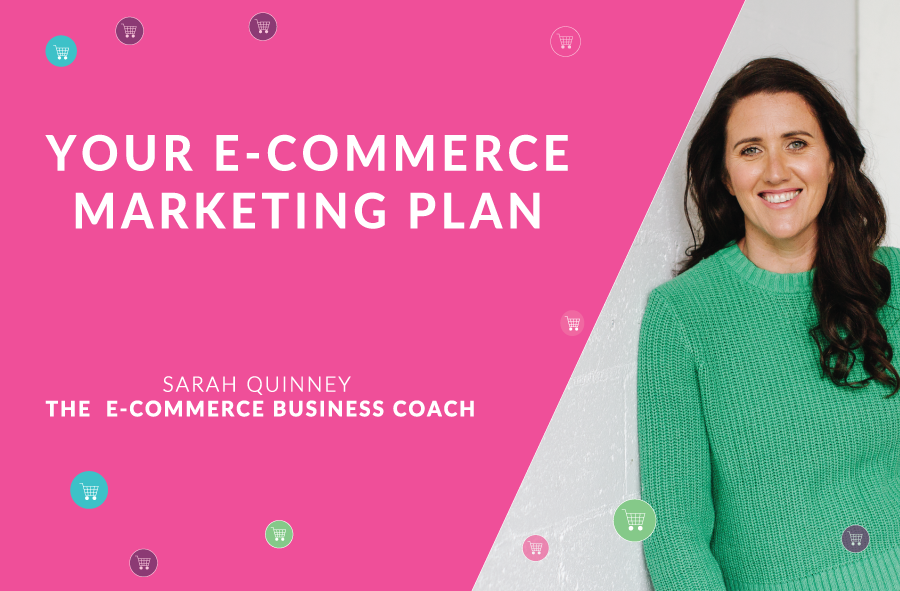
Developing an E-Commerce Marketing Plan
When you find yourself with a grand idea, it’s tempting to run with it. You’re motivated, full of energy, and ready to tackle and transform it into something tangible.
Well, if your idea involves E-Commerce, “running with it” won’t work. To establish a successful online business that will stick around for the long haul, a course of action is needed. Specifically, an E-Commerce Marketing Plan.
Putting together something so crucial to the success of your business doesn’t have to be overwhelming. Consider these guidelines for creating your marketing plan, and you will be well on your way to establishing a successful E-Commerce store.
Develop an Executive Summary
I know, I know. You heard all about executive summaries throughout your high school business class. Well, I’ll be the first to tell you that if this topic was part of the curriculum, your teacher knew what they were talking about.
Executive summaries are a must for laying business foundations. They include everything from goals and objectives to mission statements and situational analyses.
After reading your executive summary, even those who were completely unfamiliar with your business will now know what your company is about. They’ll know how you position yourself within the industry, how you provide value, who you target, and more.
Throughout this article I’ll be talking about some of the main components of the executive summary, plus a bit of added information on marketing, social media, and more.
Mission and Vision Statements
Develop your mission and vision statements to hone in on who your brand is and what you can provide to your market. Mission statements will typically list your company’s goals and provide insight into how you plan to reach them.
Let’s look at some examples.
Warby Parker’s mission statement says “To offer designer eyewear at a revolutionary price, while leading the way for socially conscious businesses.”
Tesla’s is a bit shorter and says “To accelerate the world’s transition to sustainable energy.”
These statements outline two things: the what and the how. Both show the company goals, followed by how they achieve them.
Vision statements, on the other hand, give a glimpse into the future and show the expected direction of your company.
When they were founded, Microsoft’s vision statement was “A computer on every desk and in every home.”
Alzheimer’s Association’s says “A world without Alzheimer’s disease.”
Can you see how mission and vision statements differ? Mission statements speak to the objectives of the company, while vision statements hold hopes and desires for the future.
Both are crucial to the foundation for your company because they show who you are and where you plan to go.
Identify Your Audience
You need to invest time into honing in on your target audience. You want to know as much about them as possible, and no detail is too small. The more you know, the better equipped you are to marketing to and for them.
First, look into uncovering key demographics. These include age, gender, race, occupation, annual income, etc. Second, take a look at psychographics. A deeper look into consumer lifestyles, psychographics include values, interests, personality traits, and hobbies.
Once you flesh out these details, answer the following questions.
- What do they like?
- What do they do in their free time?
- Where do they hang out on social media?
- What do they prioritize in their life?
- How are they spending their money?
- How much money do they have, and how much are they willing to spend on your products?
There are countless questions that you can use to learn more about your audience. This is a sampling.
This information can help to show what your audience prioritizes, and can also provide insight into how they spend their money. With these answers, you can learn about consumer buying habits and determine what they will be most interested in seeing from you. In the long term, this information can help you increase sales.
Before you can build your website, write product listings, and advertise, you need to know what client you will be serving. How can you successfully market your goods if you don’t narrow down to a specific niche? Fleshing out demographics and psychographics and answering the above questions will help you with that.
Advertising
Part of your marketing plan must consist of some advertising strategies. Though this may begin with little to no budget, that is okay. Even with a small budget, there are ways to effectively advertise. This will be an integral part of your marketing plan, as it will be the way in which you reach your audience.
SOCIAL MEDIA
First and foremost, create social media accounts. From your previous audience research you will know which platforms are of interest, but Facebook and Instagram are typically king and queen in this category. You may also want to think about Twitter, Snapchat, and Pinterest.
Next, you need a strategy. Creating an effective strategy takes a lot of research, but it’s so worth it in the long haul.
Once simple tip that I can give you right now is to be consistent. Develop a schedule and stick to it. Through consistency you show your audience what they can expect from you, and when.
FACEBOOK ADS
You may want to try your hand at Facebook Advertising. This can be a very lucrative practice and can also be an incredible way to gain new customers.
If and when you decide to give it a go, here are 5 easy Facebook advertising tips.
EMAIL MARKETING
Your email list will begin to grow as you make more and more sales. As this happens, you can begin thinking about an email marketing strategy. This will be crucial for product launches, updates, sales, and more.
You can invest revenue back into your advertising budget as desired in order to ramp up your reach and rapidly build your business.
SEO
A great way to further your audience reach is through the use of fantastic Search Engine Optimization (SEO).
SEO, focused on keywords, has a large impact on how successfully your content reaches users. Specific keywords need to be used throughout your website copy, product descriptions, page titles, alt tags, meta descriptions, and more.
When someone completes a web search via a search engine, the platform browses the internet for the most relevant pages. The pages are presented as search results. The more “relevant” the page, the closer to the top of the results it will be.
By implementing top-notch SEO, you help search engines to read your content as “relevant,” and in turn increase the likelihood of it being presented to users.
Check out this article for 7 quick and easy E-Commerce SEO tips that you can implement as early as today.
Don’t Forget About Design
Some may not consider design part of your marketing, but I definitely do. Why? The answer is simple. If your website’s design is poor or hard to navigate, you’re going to lose customers. It’s as simple as that.
Great design attracts and keeps shoppers, and to me, that makes it marketing.
For this reason, pay attention to your website’s user experience (UX). UX encompasses the design, usability, and function. A lot of research goes into great UX, as designers consider human behavior in the design of their products. The end results are websites (or products or apps, etc.) that are easy to navigate and make sense to the intended user.
Companies invest thousands of dollars into successful UX. Though it is a learned profession, there are some easy tips that you can implement yourself to ensure that you’re on the right track.
Set Goals
Once all of these guidelines are put into play, your final step is easy… set goals. Without goals, you can’t measure your growth and success.
Determine what is best for your company, set goals, and go after them. My advice? Go after just one goal at a time. This allows you to hone in and focus, creating a more efficient and lucrative process.
I wish you luck on your marketing journey! Stay tuned for more helpful E-Commerce tips and tricks.
Sarah

